ORP-HPT03A Back Translucent Stretcher for Patient Transport
A stretcher for patient transport is a crucial piece of medical equipment designed to safely and efficiently move patients within or between medical facilities. Typically constructed from durable materials like stainless steel or aluminum, stretchers are equipped with a padded mattress to ensure patient comfort during transport. They often feature adjustable components such as height settings, backrests, and tilting capabilities to accommodate various medical conditions and procedures. Essential for emergency, surgical, and long-term care settings, stretchers are outfitted with mobility-enhancing elements like large, smooth-rolling casters and central locking systems for secure movement. Additional features may include IV poles, safety rails, emergency push handles, and bumper wheels to protect against impacts.
Technical Parameter:
| Bed Height Min | 590mm |
| Bed Height Max | 910mm |
| Platform Size | 1940*620mm |
| Overall Size | 2150*810mm |
| Mattress Thickness | 50mm |
| Safe Working Load | 250kg |
| Back-rest | 75°±5° |
| Knee-rest | 30°±5° |
| Trendelenburg | 15°±5° |
| Reverse Trendelenburg | 15°±5° |
Technical Configuration:
| Hydraulic Pump | 2pcs |
| Hand Crank | 1pc |
| Back Rest Gas Spring | 1pc |
| 8’’ Caster | 4pcs |
| Central Locking Pedal | 2pcs |
| Directional Wheel Release Pedal | 2pcs |
| Function Control Pedal | 1set |
| Emergency Push Handle | 1set |
| Directional wheel | 1pc |
| Foldable Side Rail | 1set |
| IV Pole | 1set |
| IV Pole Prevision | 6pcs |
| X-ray Translucent Back Section | 1set |
| Bumper Wheel | 4pcs |
Product Introduction:
Quality Control:
- Technology: The technology of stretcher for patient transport has seen significant advancements in terms of durability and safety, particularly through the incorporation of materials such as cold-rolled steel sheets, combined with sophisticated coating processes like electrophoretic deposition and powder coating. Cold-rolled steel sheets provide a robust framework for stretchers, ensuring they can handle significant weight and stress while maintaining a lighter weight for easier maneuverability. The electrophoretic coating process, which involves applying a charged paint emulsion to the metal that is then cured, offers excellent corrosion resistance and increases the longevity of the stretcher under harsh operational conditions. Additionally, a top layer of powder coating is applied, which not only enhances the aesthetic appeal but also provides a tough, scratch-resistant surface that is easy to clean and disinfect. This combination of materials and technologies results in stretchers that are not only strong and durable but also hygienic and visually pleasing, meeting the rigorous demands of medical emergency services.
- Safety Standard: The safety standards for stretcher for patient transport are rigorously maintained through adherence to international standards such as ISO 13485:2016 and ISO 9001:2015, in addition to holding CE certification. ISO 13485:2016 specifically addresses the requirements for a comprehensive quality management system in the design and manufacture of medical devices, ensuring that each stretcher meets the highest safety and performance standards. ISO 9001:2015 focuses on enhancing the effectiveness of quality management systems, promoting consistency and continual improvement in the manufacturing process, which directly impacts the safety and reliability of the stretchers. CE certification further confirms that the stretchers adhere to the European Union’s stringent health, safety, and environmental protection standards. Collectively, these certifications ensure that stretcher for patient transport are not only compliant with global safety norms but are also consistently evaluated and refined, providing dependable and secure solutions for transporting patients.
Framework:
- Platform: The platform of a stretcher for patient transport is meticulously designed for both functionality and patient comfort, and it is divided into four main parts: the backboard, buttocks board, thigh board, and calf board. A critical feature of the backboard is its construction from X-ray transparent materials, which facilitates the conducting of X-ray examinations without the need to move the patient, thereby minimizing discomfort and risk. The other parts of the stretcher – the buttocks board, thigh board, and calf board – are typically made from durable metal materials that are designed with ventilation holes. These holes not only provide necessary air circulation but also enhance the overall comfort of the patient by preventing the accumulation of heat and moisture. Additionally, the metal is treated to be waterproof, ensuring that the stretcher can be effectively cleaned and maintained, thus upholding stringent hygiene standards essential in medical environments.
- Foldable Side Rail: The side rail of a stretcher for patient transport is crafted from stainless steel, providing a robust and hygienic barrier designed to ensure patient safety and comfort. These side rails are engineered to be foldable, which aids in the versatility and functionality of the stretcher, allowing for easy patient transfers and access during treatment. To enhance safety, the side rails include an anti-trapping design to prevent accidental closure and potential injury. They are also equipped with a locking mechanism, which prevents the rails from folding unintentionally, thereby securing them in place when in use. The locking mechanism can be easily disengaged by lifting the catch, allowing the side rails to be folded down smoothly. This feature not only facilitates patient handling during emergencies or regular treatment but also ensures that safety is not compromised during the stretcher’s operation.
- Base: The base of the stretcher for patient transport is designed with functionality and durability in mind, featuring a dust cover made from polypropylene (PP) material. This PP cover not only provides a robust and high-temperature resistant surface but also enhances the overall hygiene and maintenance ease of the stretcher by preventing dust accumulation and facilitating easy cleaning. Furthermore, the base is thoughtfully equipped with designated slots that serve as secure storage for essential emergency equipment, such as oxygen cylinders, as well as other necessary medical supplies. These slots ensure that vital tools are readily accessible, which is crucial during emergency situations where time and efficiency can significantly impact patient outcomes. The integration of these features into the stretcher’s base underscores a commitment to both safety and practicality, ensuring that medical professionals have the tools they need at hand while providing care.
Function:
The following functions are controlled by the FOOT PEDAL:
- Trendelenburg/Reverse Trendelenburg: The stretcher for patient transport is equipped with the capability to adjust into Trendelenburg and Reverse Trendelenburg positions, enhancing its versatility and application in various medical scenarios. This feature allows the stretcher to tilt the patient’s body by 15°±5° either head down (Trendelenburg) or head up (Reverse Trendelenburg). The Trendelenburg position is particularly useful in situations where it’s necessary to increase venous return to the heart, improve circulation, and facilitate respiration, commonly used in emergency and shock management. Conversely, the Reverse Trendelenburg position elevates the patient’s head and torso, which is beneficial during surgical procedures that involve the lower body, and can aid in reducing the risk of respiratory complications by promoting easier breathing. The ability to precisely control the angle of tilt ensures that the stretcher can be quickly and safely adjusted to meet the specific needs of patients, whether they require improved circulation or better respiratory function, thereby enhancing patient care and outcomes.
- Whole Stretcher Height Adjustment: The stretcher for patient transport is designed with a highly adaptable height adjustment feature, allowing for a lifting range from 590mm to 910mm. This functionality is crucial in a variety of medical and emergency settings, facilitating seamless interactions with other medical equipment and ensuring compatibility with different treatment environments, such as operating rooms or emergency units. The ability to adjust the height of the stretcher ensures ergonomic ease for healthcare providers, reducing strain during patient transfers and treatments, and enabling optimal positioning for both patient comfort and medical access. Whether lowering to facilitate patient boarding or raising to align with medical apparatus or healthcare provider requirements, the stretcher’s adjustable height feature enhances operational efficiency and supports better patient care outcomes. This range of height adjustment is particularly beneficial in dynamic medical scenarios where quick adaptation to the needs of both the patient and the medical team is essential.
The following function is controlled by the HAND CRANK:
- Leg Section Adjustment: The leg section of the stretcher for patient transport features a manual adjustment mechanism that allows for precise control over the positioning of a patient’s legs. This adjustment capability enables the leg section to be lifted by 30°±5°, providing essential flexibility to cater to various medical needs and patient comfort. This manual adjustment is particularly beneficial during procedures that require specific leg positioning or to enhance circulation and reduce the risk of pressure ulcers during extended periods of immobility. The ability to finely tune the angle of the legs can also assist in reducing swelling and improving overall patient comfort during transport. The simplicity of the manual mechanism ensures that healthcare providers can quickly and easily make adjustments even in high-pressure situations, ensuring that patient care remains both effective and efficient. This feature underscores the stretcher’s design focus on adaptability and patient-centered care in diverse medical scenarios.
The following function is controlled by the HANDLE:
- Back Section Adjustment: The back section of the stretcher for patient transport is designed with a user-friendly adjustment mechanism that enhances both patient comfort and medical accessibility. This adjustment is facilitated by a lever located beneath the back panel, which, when pressed, allows healthcare providers to easily lift the back section to the desired position. The back can be adjusted up to an angle of 75°±5°, providing significant flexibility for various medical requirements, such as respiratory ease, patient comfort during feeding, or positioning during certain medical examinations and procedures. This range of motion is particularly advantageous for patients who need to be semi-upright for extended periods or for those requiring specific postural adjustments to alleviate discomfort. The intuitive placement of the lever ensures that adjustments can be made swiftly and smoothly, minimizing effort and maximizing efficiency for medical staff, thereby supporting better overall patient care during transport.
Accessory Detail:
- Hydraulic Pump: The stretcher for patient transport is equipped with two hydraulic pumps that control the height and the anterior-posterior tilting of the stretcher, providing precise, stable, and quiet operation. This dual-pump system allows for seamless adjustments to the stretcher’s elevation and tilt, enabling healthcare providers to quickly and easily position the patient for optimal medical access and comfort. The hydraulic mechanism offers a significant advantage in terms of smoothness and control compared to manual systems, minimizing any jarring movements that could discomfort the patient or disrupt medical procedures. Additionally, the hydraulic pumps operate quietly, which is essential in maintaining a calm and soothing environment conducive to patient recovery. This feature underscores the stretcher’s design focus on combining advanced technology with patient-centric care, ensuring that medical facilities can deliver high-quality, efficient, and compassionate service.
- Caster: The stretcher for patient transport is outfitted with four robust 200mm casters, enhancing its maneuverability and ease of use across various environments, both indoors and outdoors. The larger diameter of these casters allows for smoother, more effortless movement, enabling healthcare providers to navigate the stretcher with minimal effort, even over obstacles and uneven surfaces. This feature is particularly valuable in emergency situations where speed and stability are crucial. Additionally, the casters are made from thermoplastic elastomer (TPE) material, which is known for its excellent heat resistance and anti-corrosion properties. This material choice not only ensures the durability and longevity of the casters but also contributes to the overall safety and reliability of the stretcher by maintaining performance integrity in different climatic conditions. The combination of size, material, and design of the casters significantly enhances the functionality of the stretcher, making it an indispensable tool in fast-paced medical settings.
- Central Locking Pedal: The stretcher for patient transport is designed with a highly effective central locking pedal system, strategically located at both the head and foot ends of the stretcher. This system allows for comprehensive control over all the casters simultaneously, ensuring total braking or mobility with a simple action. When the red side of the pedal is depressed, the entire braking system is activated, securing all wheels and stabilizing the stretcher in place. This feature is critical for ensuring patient safety during transfers, medical procedures, or when the stretcher needs to remain stationary. Conversely, pressing the green side of the pedal releases the brakes, allowing the stretcher to move freely. This dual-pedal system enhances the usability of the stretcher, providing quick and efficient transitions between stationary and mobile states, which is particularly valuable in emergency or high-paced medical environments where time and patient stability are of the essence.
- Directional Wheel with Control Pedal: The stretcher for patient transport incorporates an advanced directional wheel system, which includes a pivotal fifth caster known as a steering or tracking wheel. This system is specifically designed to enhance maneuverability and control during transport, particularly in urgent situations. When the red side of the pedal associated with this wheel is engaged, the stretcher locks into a straight-line mode. This feature is crucial for swiftly moving the stretcher in a direct path, facilitating rapid and controlled navigation through corridors or to emergency exits without deviating from the course. Conversely, depressing the green side of the pedal unlocks the directional constraint, allowing the stretcher to move freely in any direction. This flexibility is essential for handling corners, navigating through crowded or complex spaces, and adjusting the stretcher’s position with minimal effort. The inclusion of this directional wheel system significantly improves the operational efficiency of the stretcher, making it highly adaptable to a variety of emergency and healthcare settings.
- IV Pole&IV Pole Prevision: The stretcher for patient transport is equipped with an adjustable IV pole, crafted from durable stainless steel to ensure longevity and cleanliness. This IV pole includes four hooks, allowing for the simultaneous administration of multiple IV bags, which is particularly beneficial in emergency or intensive care scenarios where patients might require various fluids or medications concurrently. To further enhance its versatility and meet diverse clinical needs, the stretcher features six IV pole previsions distributed along the bedside edges. These strategically placed sockets allow healthcare providers to position the IV pole at multiple locations around the stretcher, ensuring optimal accessibility and convenience regardless of the stretcher’s orientation or the surrounding environment. This thoughtful integration of the IV pole and its provisions across the stretcher ensures that patient care can be personalized and fluid management can be efficiently handled, contributing significantly to the overall effectiveness of patient transport and treatment procedures.
- Emergency Push Handle: The stretcher for patient transport is equipped with an emergency push handle designed to optimize maneuverability and control during critical situations. This handle allows healthcare providers to exert additional force for rapid and precise movement, crucial in emergency scenarios where every second counts. The handle’s design incorporates a foldable feature, which is particularly advantageous in space-constrained environments such as crowded hospital corridors or compact emergency rooms. When not in use, the handle can be easily folded down, maintaining the stretcher’s compact footprint and ensuring it does not obstruct pathways or interfere with other medical activities. This thoughtful design element not only enhances the functionality of the stretcher during urgent medical responses but also contributes to efficient space management, keeping areas clear and accessible.
- Mattress: The stretcher for patient transport is equipped with a 50mm thick mattress designed to provide optimal comfort and support for patients during transport. The mattress features a soft sponge inner core that conforms to the patient’s body shape, helping to distribute weight evenly and reduce pressure points, which are critical in preventing the development of pressure ulcers (bedsores). Encasing this sponge core is a waterproof yet breathable cover that not only protects the mattress from spills and contaminants but also promotes air circulation. This combination of waterproofing and breathability is essential in maintaining a hygienic environment conducive to patient recovery and comfort. The thoughtful design of the mattress ensures that it meets the dual requirements of comfort and clinical efficacy, making it an integral part of the stretcher’s utility in providing safe and effective patient care during transport.
- Bumper Wheel: The stretcher for patient transport is thoughtfully equipped with bumper wheels located at each of its four corners, enhancing both safety and durability. These bumpers are constructed from a soft, resilient material designed to absorb and dissipate the forces generated during collisions or impacts. This feature is crucial in preventing damage to the stretcher itself, as well as protecting the walls and doorways of medical facilities from scuffs and dents during rapid maneuvers through tight spaces. Additionally, the cushioning effect of the bumper wheels plays a significant role in safeguarding the patient, minimizing the jarring and vibrations that occur if the stretcher inadvertently comes into contact with obstacles or other surfaces. By reducing the risk of equipment damage and enhancing patient protection, these bumper wheels significantly contribute to a safer and more efficient patient transport process, ultimately leading to better overall outcomes in patient care and facility maintenance.
SIDE RAIL LOCKING SYSTEM
Stainless steel, foldable. With anti-card design, enhance security. With a buckle device, can effectively prevent the guardrail accidental folding. The lifting clip device can fold the guardrail, which is convenient for patient transfer and treatment.
BACK-REST
Press the handle under the backplane to lift it to the required position. Lifting for 75°±5°.
CASTER
Four 200mm casters, the larger the diameter of the casters, the less effort to push, the better the ability to overcome obstacles, suitable for rapid implementation in emergency situations in different indoor and outdoor environments. TPE material, heat resistance, corrosion resistance.
CENTRAL LOCKING PEDAL
The head and tail of the stretcher have a central control brake pedal, which can brake as a whole and control all the casters. Put on the red side and apply the brakes. Step on the green side, the stretcher can move.
CONTROL PEDAL
From left to right: overall rise, backward tilt, overall fall, forward tilt, the fifth guide wheel landing, the fifth guide wheel lifting.
PLATFORM
It is divided into four parts: backplane, buttock plate, thigh plate and calf plate. The back X-ray material facilitates the X-ray examination of the patient without moving the patient. The rest of the metal material, with air holes, effective waterproof and breathable.
PUSH HANDLE
Both stretcher head and foot equipped with a set of handle, for pushing in emergency situation.


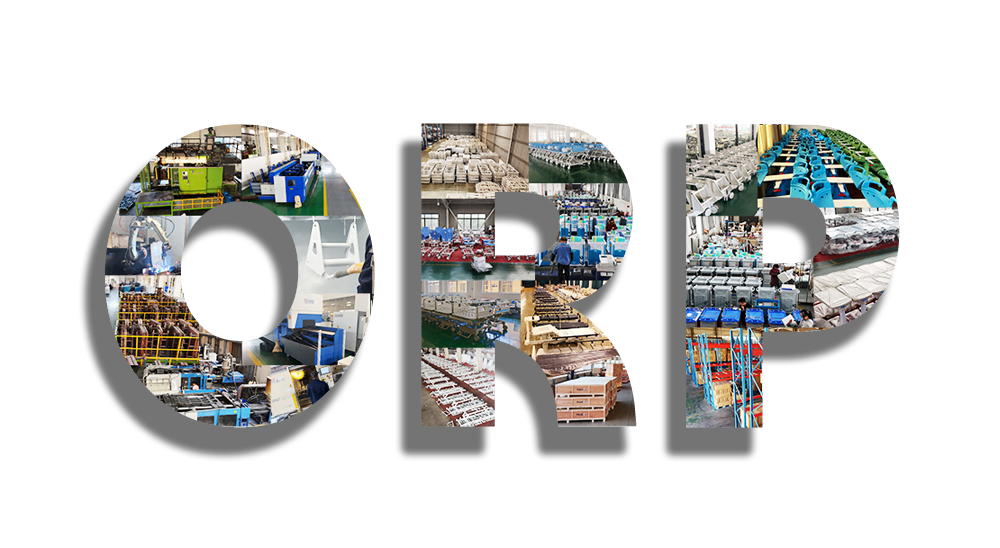
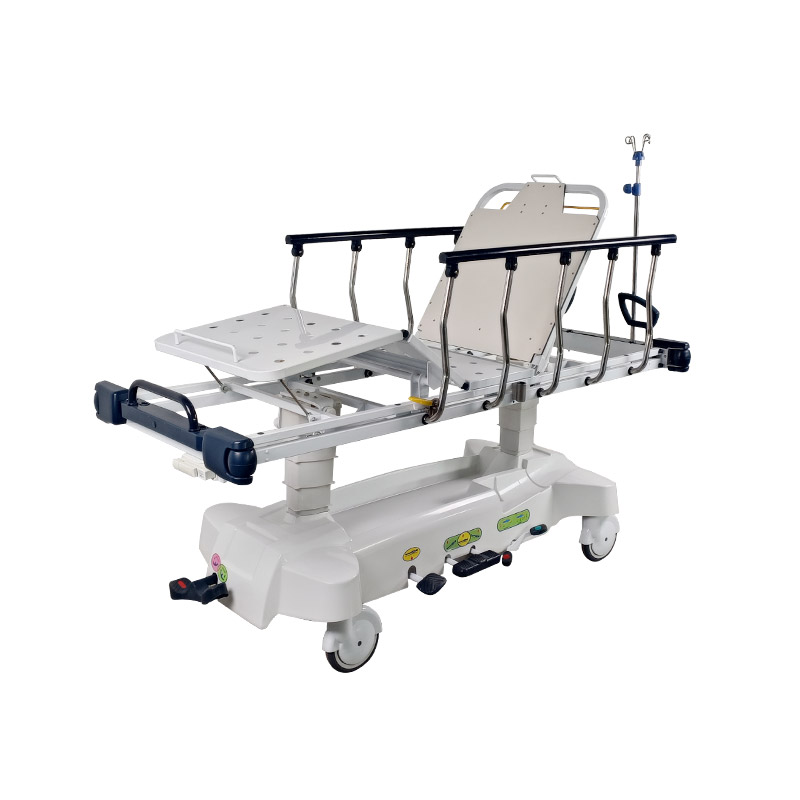
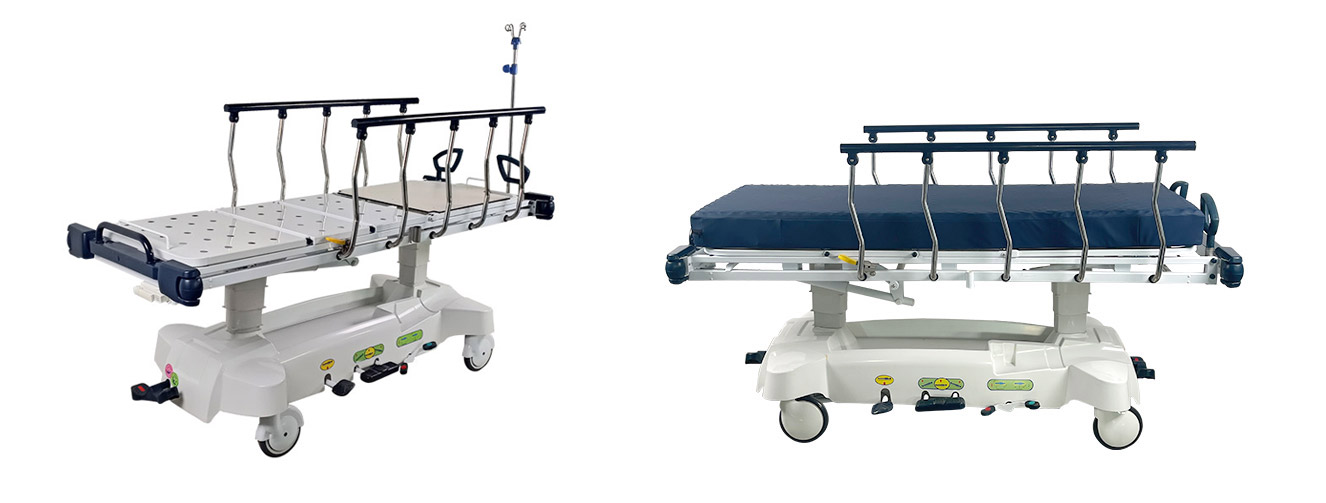
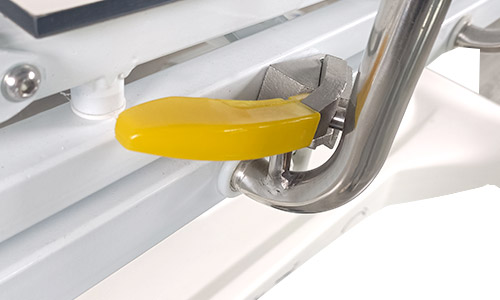
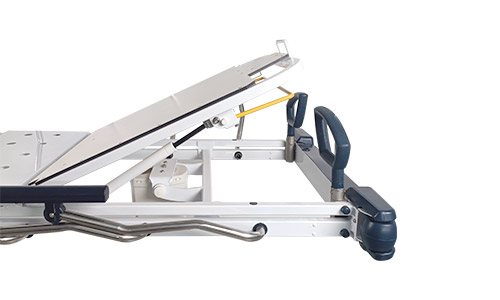
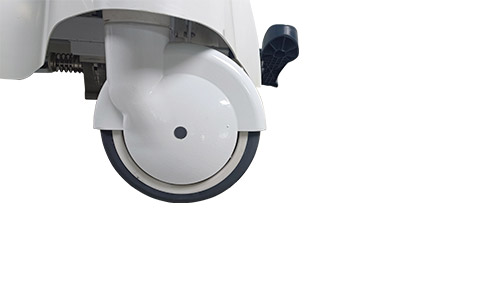
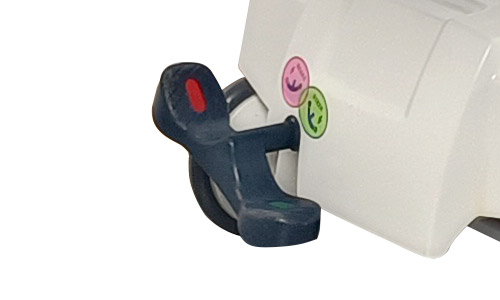

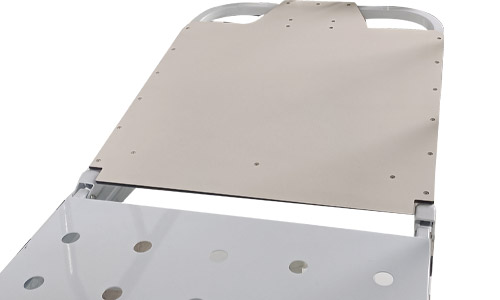
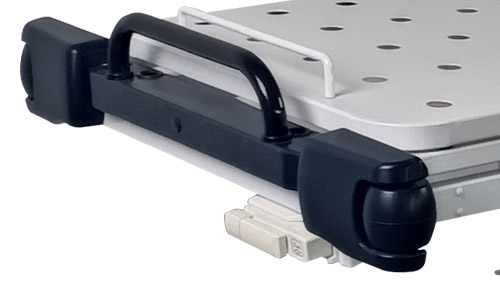
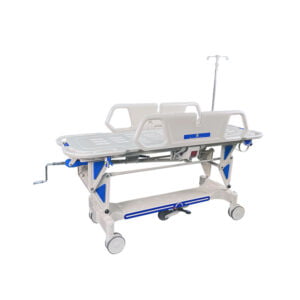
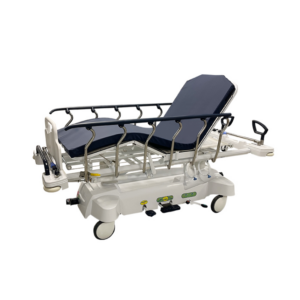
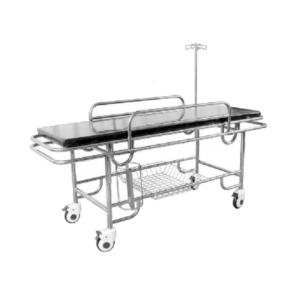
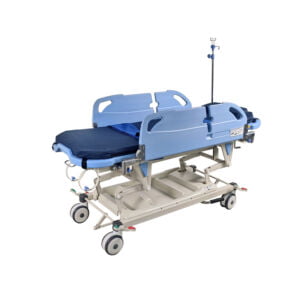

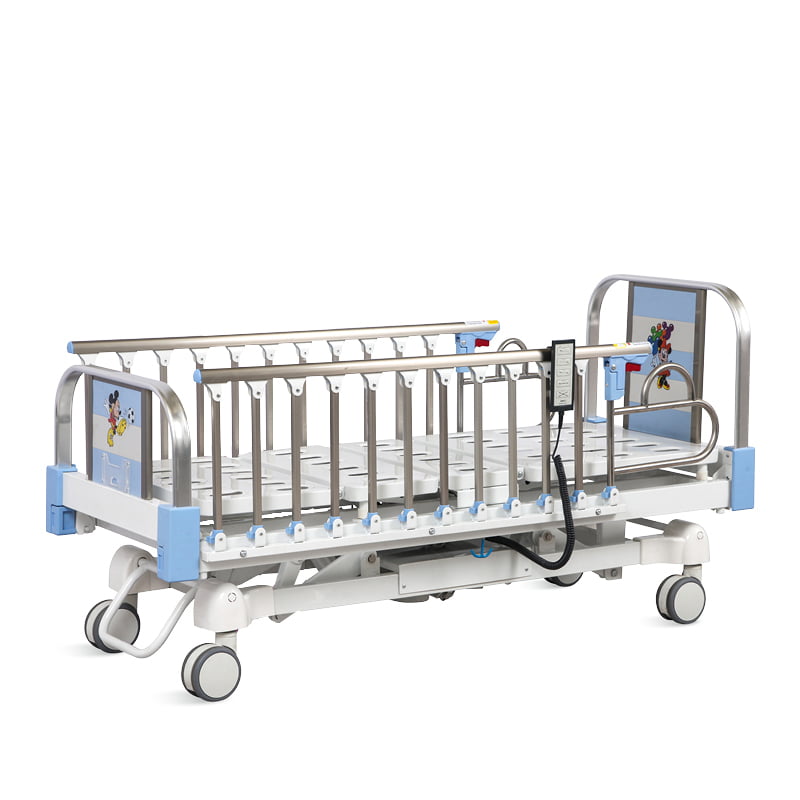
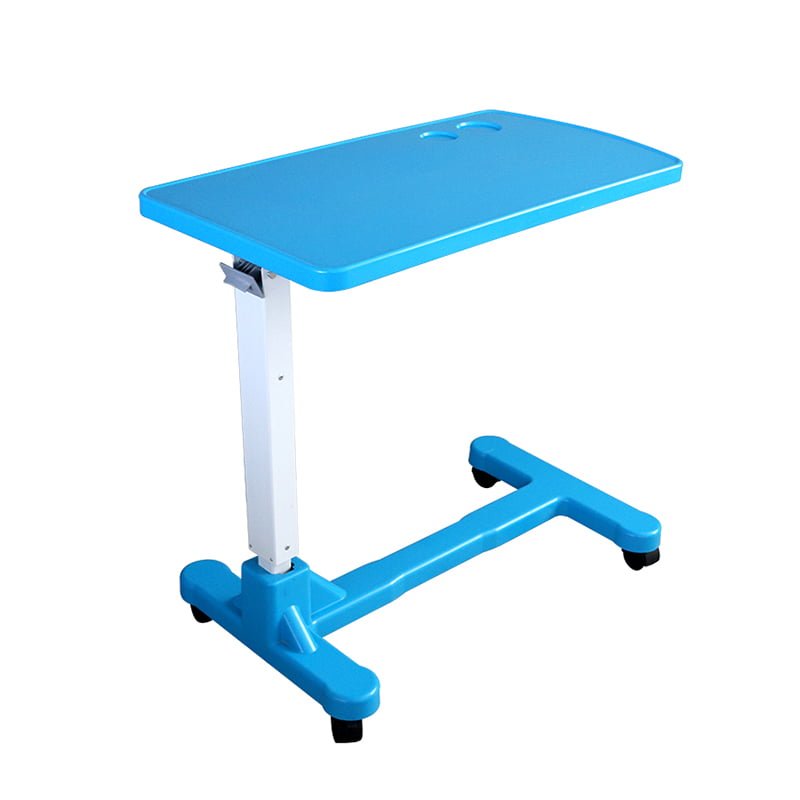
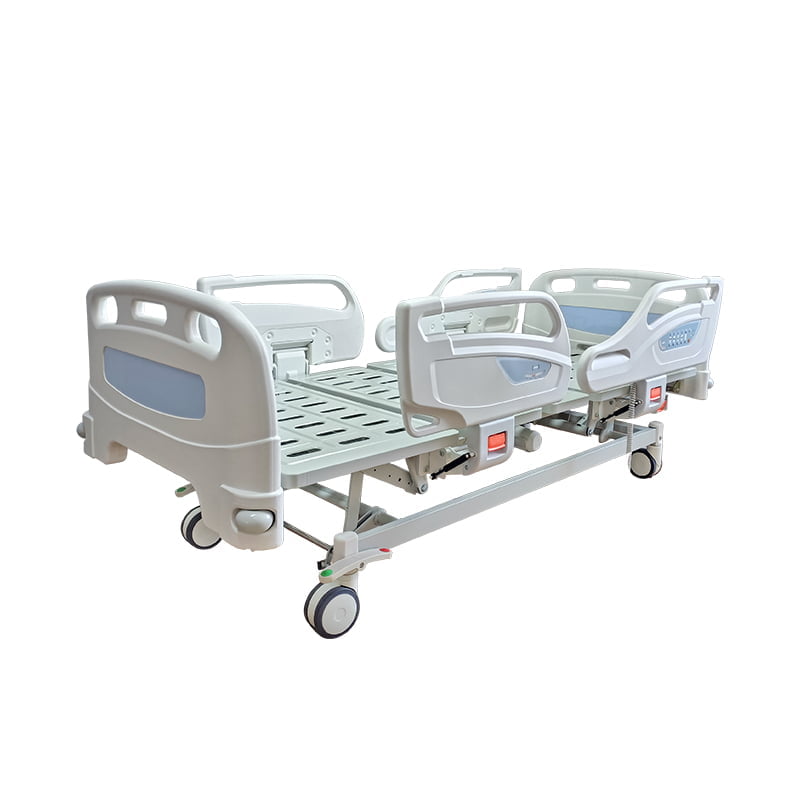
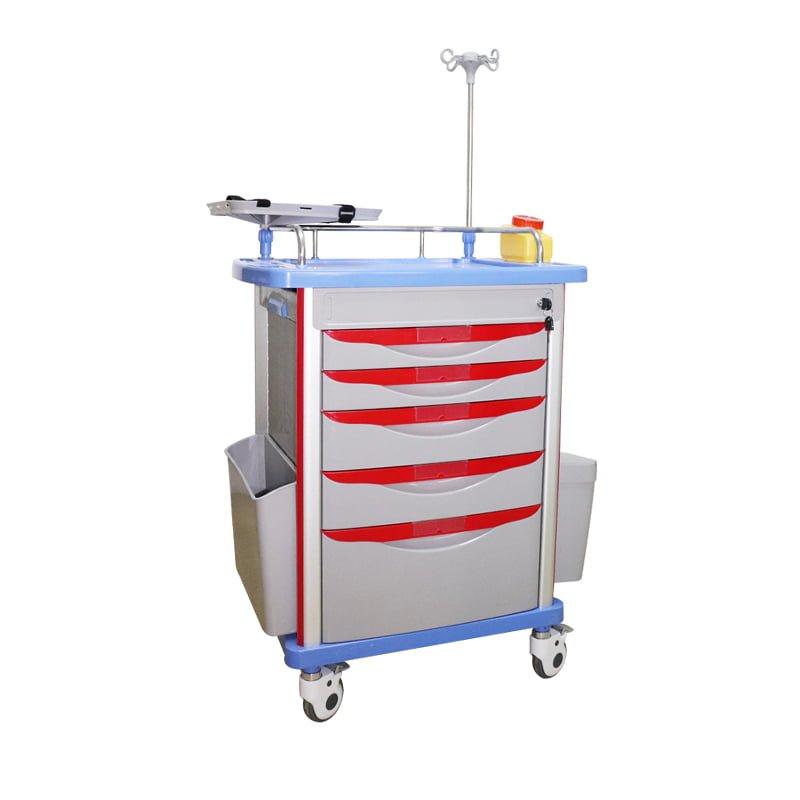
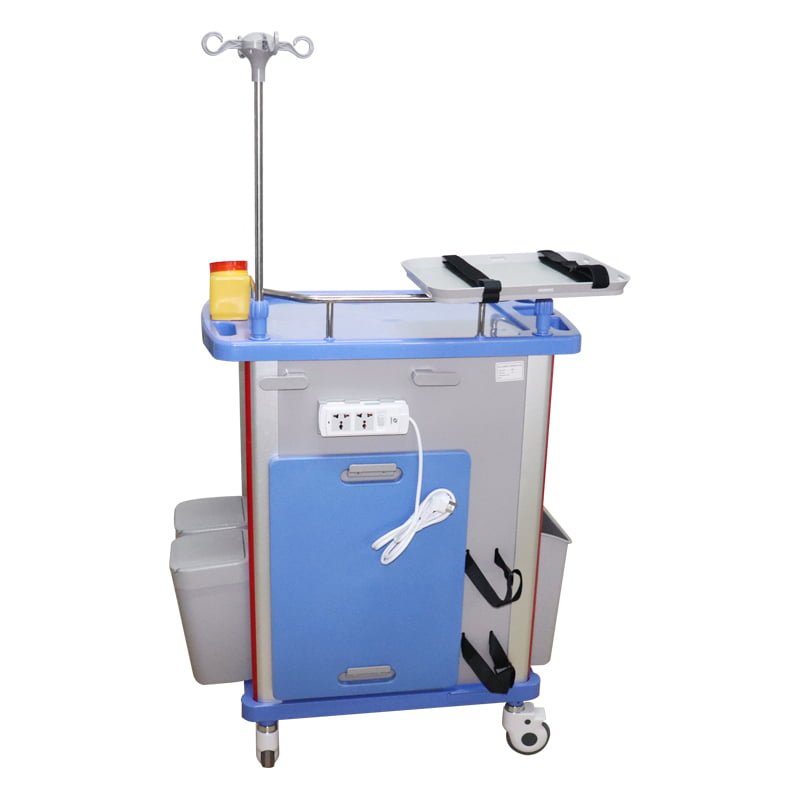
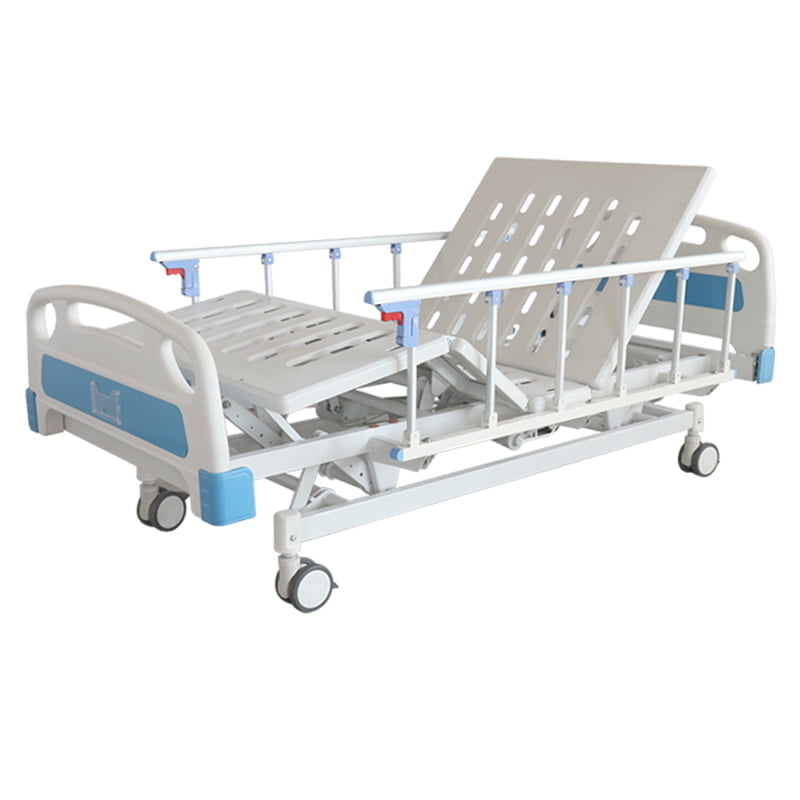
Reviews
There are no reviews yet.